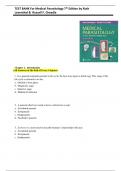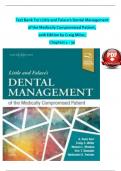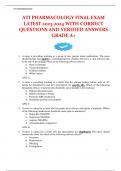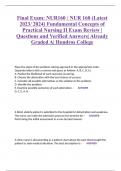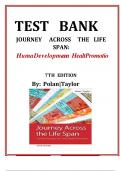Exam (elaborations)
TEST BANK FOR Medical Parasitology: A Self-Instructional Text Seventh Edition by Ruth Leventhal and Russell F. Cheadle , ISBN: 9780803675797 |COMPLETE TEST BANK| Guide A+
TEST BANK for Medical Parasitology, 7th Edition by Leventhal; Cheadle, All 11 Chapters Covered, Verified Latest Edition TEST BANK for Medical Parasitology, 7th Edition by Ruth Leventhal; Russell F. Cheadle | Verified Chapter's 1 - 11 | Complete Newest Version Test Bank For Leventhal - Medical Paras...
[Show more]
